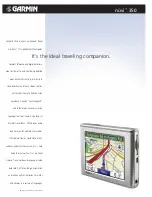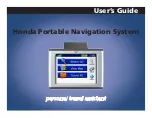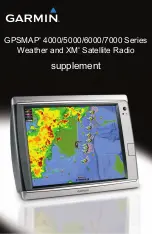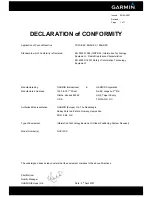
91
Whiteline/Thermoclines
Appendix H
Whiteline
The GPSMAP 2006/2010 with GSD 20 can help you to determine if the bottom is hard or soft. When
the sonar soundwaves are reflected back by the bottom, a hard bottom will return a stronger signal than a
soft bottom. A thin whiteline indicates a softer bottom while a thick whiteline indicates a harder bottom.
Normally, a red/dark line is used to show the point where water meets the bottom. This line will follow
the bottom contour, along with any significant objects lying on the bottom. The unit uses the whiteline
function to make this bottom layer infor-
mation easier to distinguish.
With the GPSMAP 2006/2010 and
GSD 20, active whiteline helps accentu-
ate where strong signals are located,
which make bottom type determination
easier. The example to the right shows
the bottom return with and without the
whiteline activated.
Thermoclines
One of the unique features offered by Garmin is See-
Thru technology. See-Thru technology allows the GPSMAP
2006/2010 with GSD 20 to “see” through thermoclines and
helps locate fish where they live; and fish love thermoclines!
A rough definition of a thermocline is a break in water
where the water temperature changes faster than the water
above it. Thermoclines are shown as the weakest colors (see
pg. 24)
Whiteline can also help you to determine the type of
bottom structure that is displayed on the graph. By
determining the hardness of the structure, you can make
a better informed decision on the type of structure.
Structure is hard—
probably a rock or
stump
Structure is soft—
probably a mud pile
Thermo-
cline
Whiteline Turned Off
Hard Bottom
Whiteline
Soft Bottom


























![Navig[8]r NAVBIKE-GPS User Manual preview](http://thumbs.mh-extra.com/thumbs/navig-8-r/navbike-gps/navbike-gps_user-manual_3574097-01.webp)









